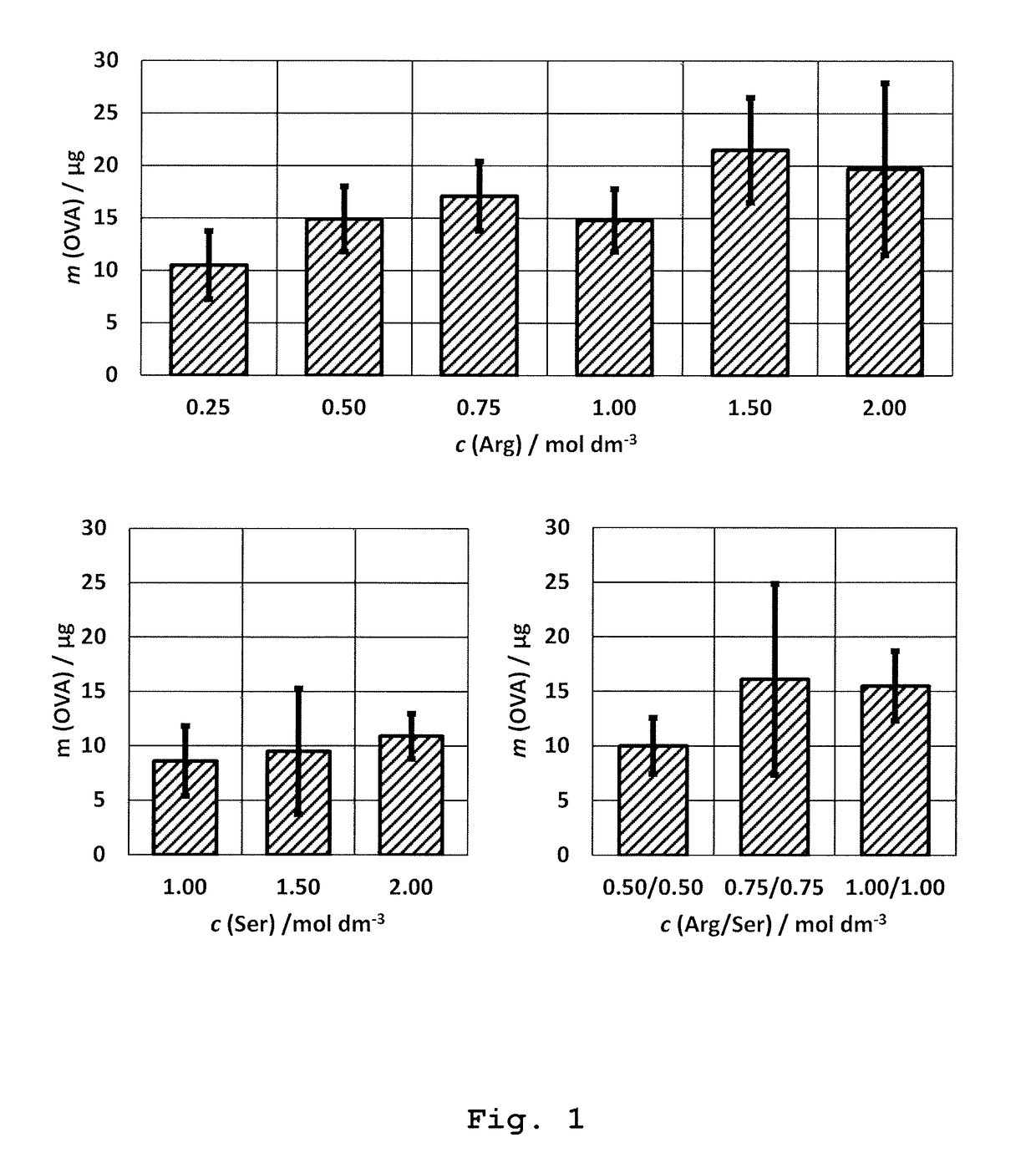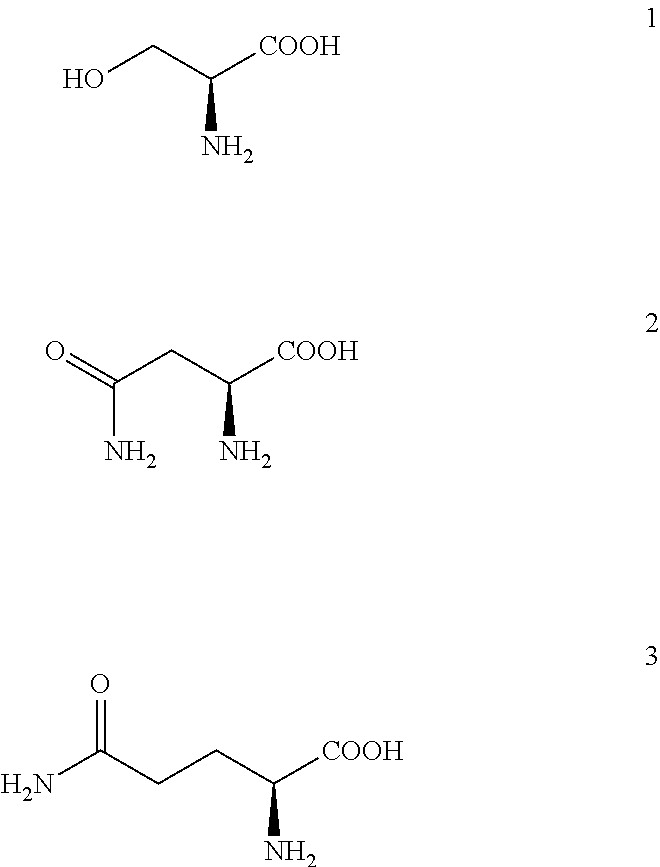An elution mobile phase and process for immunoaffinity chromatography of viruses
a technology of immunoaffinity chromatography and mobile phase, which is applied in the field of elution mobile phase and process of immunoaffinity chromatography of viruses, can solve the problems of inability to achieve bond cleavage under, inability to isolate and purify biologically active molecules in general, and inability to achieve high-selectivity purification,
- Summary
- Abstract
- Description
- Claims
- Application Information
AI Technical Summary
Benefits of technology
Problems solved by technology
Method used
Image
Examples
example 1
Immunoaffinity Chromatography of Ovalbumin by Using 1.5 M Arginine Solution at pH=7.3 (Native pH)
[0170]Preparation of immunoaffinity stationary phase: Immunoaffinity stationary phase was prepared by binding the rabbit polyclonal antibody of IgG-class specific to ovalbumin to monolithic column (BIA Separations; Ajdovščina, Slovenia).
[0171]Polyclonal antibodies were prepared by active immunization of rabbits with ovalbumin (OVA; Serva; Heidelberg, Germany) formulated with adjuvants: Montanide ISA720PGM (Seppic; Puteaux, France) and peptidoglycan monomer (PGM; Pliva; Zagreb, Croatia; see literature references 15-17) as follows: OVA was dissolved in physiological solution (Imunol{hacek over (o)}ki Zavod; Zagreb, Croatia) in a concentration of 3.78 mg / mL. PGM adjuvant was separately dissolved in physiological solution at a concentration of 7.56 mg / mL. Then, both solutions are combined at volume ratio 1:1 yielding the solution which contained 1.89 mg / mL of OVA and 3.78 mg / mL of PGM. Then,...
example 2
Immunoaffinity Chromatography of Ovalbumin with Native Elution with 0.75 M Ser+0.75 Arg Solution at pH=7.3
[0189]The preparation of the immunoaffinity stationary phase, its equilibration with the binding buffer, binding of OVA to the stationary phase, as well as the washing of non-bound OVA were carried out as described in Example 1.
[0190]Native elution was performed with 2 mL solution of 0.75 M Ser (Fluka; Buchs, Switzerland)+0.75 M Arg at pH=7.3 (chromatographic peak E1). The mobile phase was previously prepared by dissolution of required amount of Ser and Arg in purified water followed by pH correction to 7.3, according to the instructions decribed in the section “General remarks”.
[0191]Final step was the elution with 2 mL of Gly solution of low pH (20 mM Gly, 0.15 M NaCl, pH=2.3) as desribed in Example 1. The fractions under peaks E1 and E2 were collected up to total volume of 5 mL. The experiment was repeated in triplicate.
[0192]The result: The native elution with 0.75 M Ser+0.7...
example 3
Immunoaffinity Chromatography of Ovalbumin by Using Glycine at Low Ph; A Model Elution Under Non-Native Eluting Conditions
[0197]The preparation of the immunoaffinity stationary phase, its equilibration with the binding buffer, binding of OVA to the stationary phase, as well as the washing of non-bound OVA were carried out as described in Example 1.
[0198]In this experiment the elution of bound OVA was conducted with a solution of Gly at low pH value (20 mM Gly, 0.15 M NaCl, pH=2.3). This was performed for evaluation of total bound OVA on the immunoaffinity stationary phase; determination of its capacity. The peak E2 was collected manually from the moment of starting elution, up to the total consumed volume of 5 mL. The experiment was carried out in triplicate.
[0199]The result: The elution of OVA with acidic Gly solution, the total of 57.5±5.8 μg ovalbumin (peak E2) was obtained; see Table 1, run 9. This result actually represents a measure of the capacity of this column.
PUM
| Property | Measurement | Unit |
|---|---|---|
| pH | aaaaa | aaaaa |
| pH | aaaaa | aaaaa |
| size | aaaaa | aaaaa |
Abstract
Description
Claims
Application Information
 Login to View More
Login to View More - R&D
- Intellectual Property
- Life Sciences
- Materials
- Tech Scout
- Unparalleled Data Quality
- Higher Quality Content
- 60% Fewer Hallucinations
Browse by: Latest US Patents, China's latest patents, Technical Efficacy Thesaurus, Application Domain, Technology Topic, Popular Technical Reports.
© 2025 PatSnap. All rights reserved.Legal|Privacy policy|Modern Slavery Act Transparency Statement|Sitemap|About US| Contact US: help@patsnap.com



